Add This Gorgeous New Art Museum to Your Travel Bucket lIst
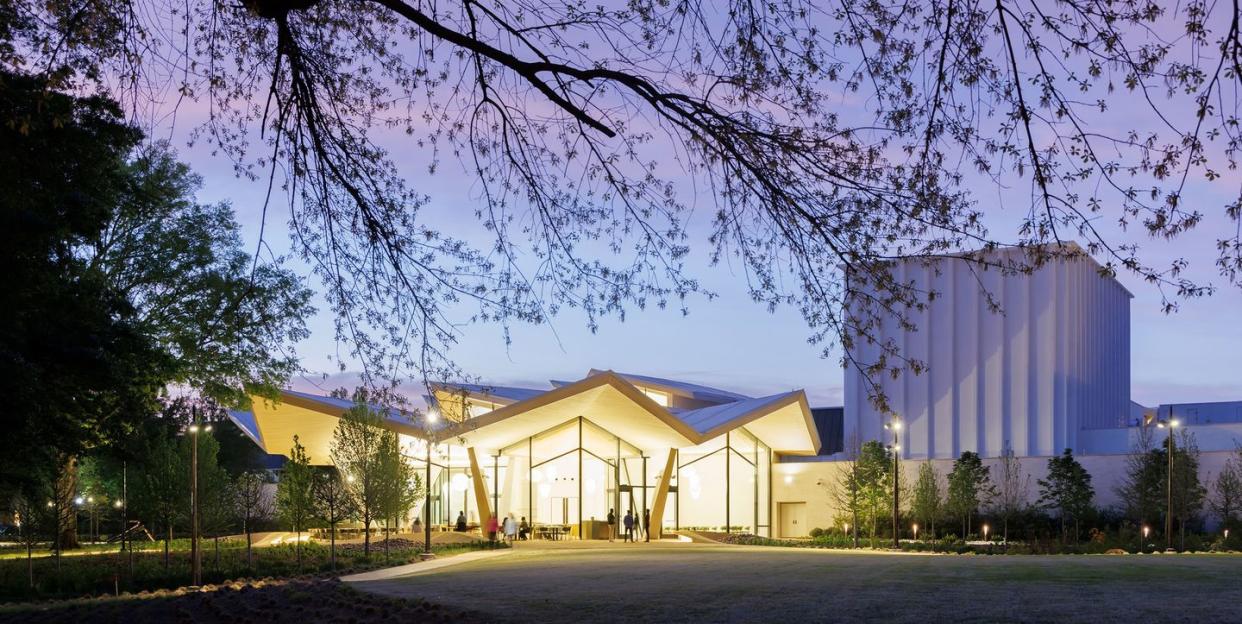
- Oops!Something went wrong.Please try again later.
When the city of Little Rock, Arkansas, opened the doors to its first-ever fine arts museum on a late October evening in 1937, it was clear that the institution would forever be a point of pride for the community. WPA laborers reportedly worked double shifts to complete the $70,000 state-of-the-art building, which featured, among other marvels, radiators trimmed in local marble, mahogany floors, and air-conditioning. Hundreds of visitors crowded the galleries that night to take in etchings by Whistler and Rembrandt and works by fellow Arkansans.
“The city has, at last, a museum it can be proud of,” remarked newspaperman Fred W. Allsopp. “Great art collections like those of the Metropolitan Museum of New York and the Louvre of Paris with their priceless treasures are not formed in a day, especially in places not blessed with great riches. We have no masterpieces…but we have a credible nucleus.”
Over the decades, the museum became a vital Little Rock creative hub, adding a children’s theater (where then governor Bill Clinton remembers attending performances by his daughter, Chelsea) and an arts school in 1963. But after a series of bulky additions swallowed the original building, it became clear that the museum needed a fresh path forward to bring new audiences through its doors. This spring, a gleaming renovation by Chicago architecture firm Studio Gang in partnership with landscape office Scape, has helped the Arkansas Museum of Fine Arts (AMFA) become a new beacon for the city of Little Rock and an essential new arts destination.
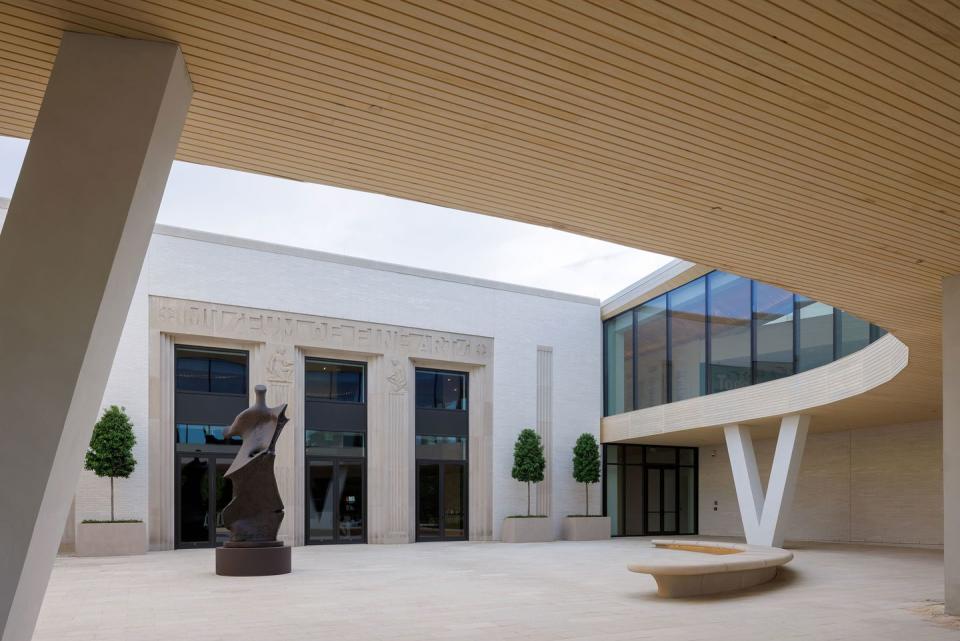
But it wouldn’t be an easy journey. The building had to pack in an atypical amount of program for an art museum, encompassing not only galleries but also a restaurant, meeting spaces, a gift shop, a theater, and an art school that would house, among studio spaces and drawing studios, as many as 30 red-hot kilns. The building had become so muddled on the inside and so marooned in a sea of asphalt parking lots on the outside that the whole campus had become effectively “encrusted,” as Studio Gang founder Jeanne Gang puts it (don’t even get her started on the myriad structural and mechanical systems). “Nobody felt welcome here because it looked like a big dark building,” she says.
Studio Gang’s solution was to create a building that’s equal parts museum, equal parts front porch. Gang and her team, working with structural engineers at Thornton Tomasetti, inserted a serpentine, origami-like concrete roof that, like a river of light, draws visitors in and through the building’s lofty atrium and toward its galleries.
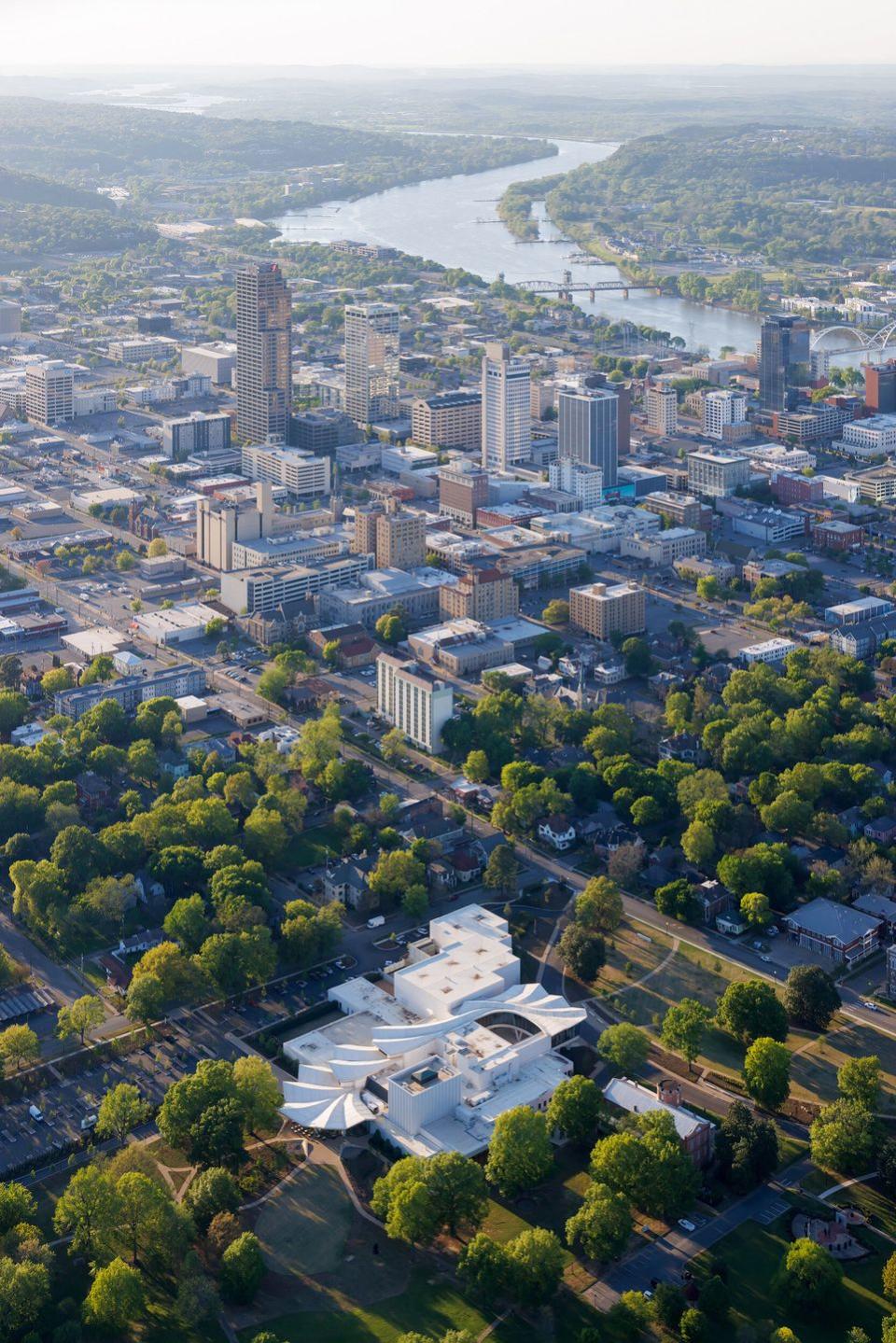
This sweeping roof structure—nicknamed “the blossom” by the design team—provided a unique design opportunity to reexpose the original Art Deco facade. Now an elevated upper level hugs the restored entrance like an embrace, creating an entry court (where Henry Moore’s sculpture Large Standing Figure: Knife Edge beckons) and a unique spatial opportunity: a hovering, light-filled lounge, called the Cultural Living Room, that provides a place where museumgoers (admission is free) can hang out, work, grab a snack, or simply gaze at the museum’s stately facade. For Gang, it reminds her of growing up in Chicago and riding the L train “where you get to see buildings up on a different level than from the street.”
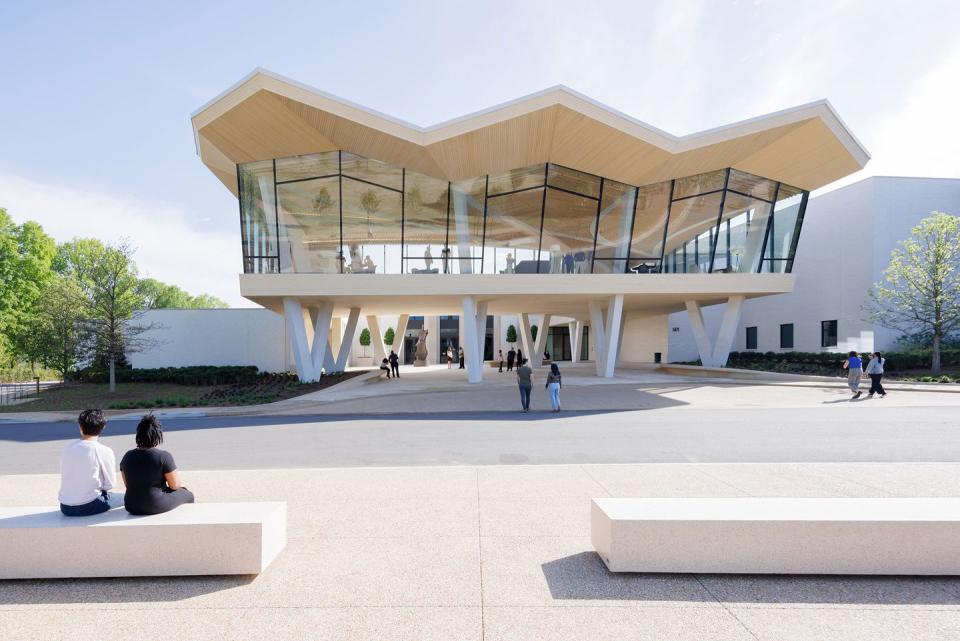
The birds-eye view also affords views out to McArthur Park, Little Rock’s first municipal landscape. Kate Orff, founder of Scape, worked with Gang’s team to ensure that the building and landscape were in dialogue as visitors moved through the building. Though the galleries are dim (to protect light-sensitive works on papers), tantalizing splashes of green at the building’s extremities draw you through. “Jeanne and I have worked together a lot and we have a very similar methodology. It’s sort of like a mind meld,” Orff says.
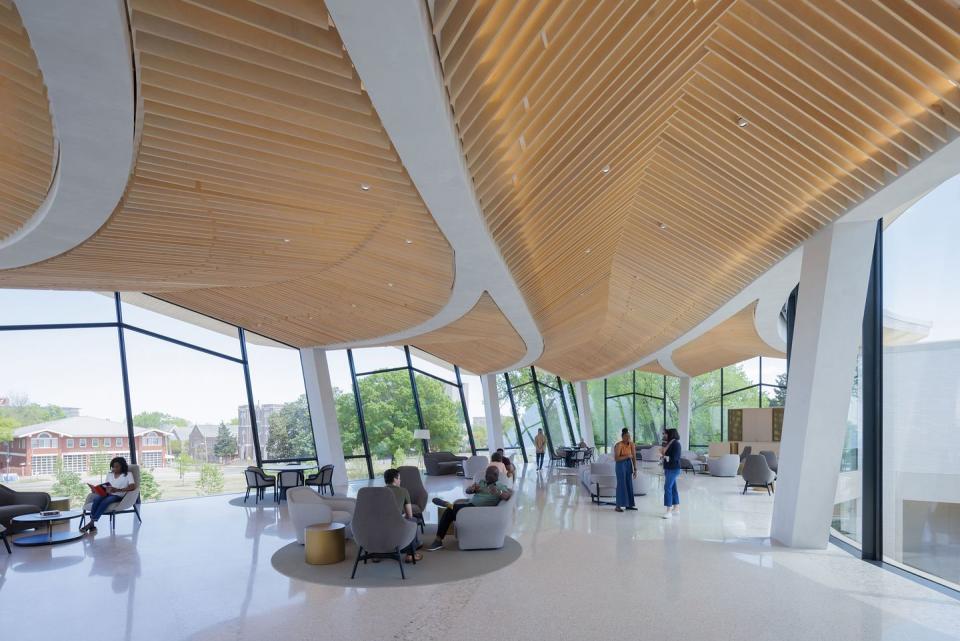
Outside, where Orff’s team rehabbed 11 acres of parkland, the building’s roof blossom channels rainwater into so-called petal gardens that redirect moisture back into the landscape. There’s also a picnic lawn, sculpture gardens, and areas where Arkansas native flora, like willow oaks, purple baptisia, and oak sedge, can grow wild. Orff calls the approach a “curated ecological garden.” “It’s trying to find a balance between a restored nature sort of landscape—which is of course, my own interest—but also really creating a very refined, formal setting for the art museum,” she says. “What I detest—or dislike—are people who are like, ‘This has to be white flowers.’”
The new AMFA building and its sylvan setting set the stage for a reinvigorated curatorial perspective. Its inaugural exhibition, Together—with works from a diverse cast of creatives ranging from conceptual artist Félix González-Torres to “Pop Art nun” Corita Kent to Little Rock native LaToya M. Hobbs—is a joyous celebration of creativity and communion, and “affirms our institutional commitment to openness and inclusivity as we embark on a new chapter in our history,” according to a museum statement.
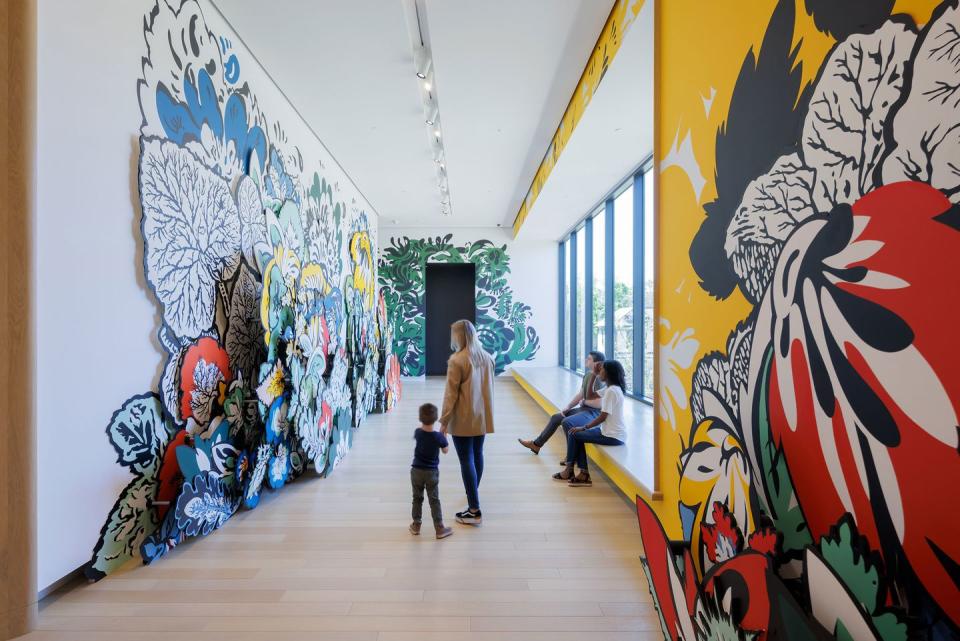
In AMFA’s permanent collection, showcased in a diagonal progression of eight galleries, works by Rembrandt and Monet are just steps away from compelling works by Kerry James Marshall, Peter Pinkus, and Raven Halfmoon. A particularly stirring portrait by Titus Kaphar features delicate, overlaid line drawings based on mugshots of Black men. The wall text, in addition to explaining the work, provides statistics from the Pew Charitable Trust about mass incarceration. In a city where segregation is still within living memory, this kind of approach feels urgent and necessary. “Art is what makes it possible to talk about the things that you can’t talk about in other political contexts,” Gang says.
“Architecture’s job,” she adds, “is to make sure everybody feels welcome to come inside.”
You Might Also Like

